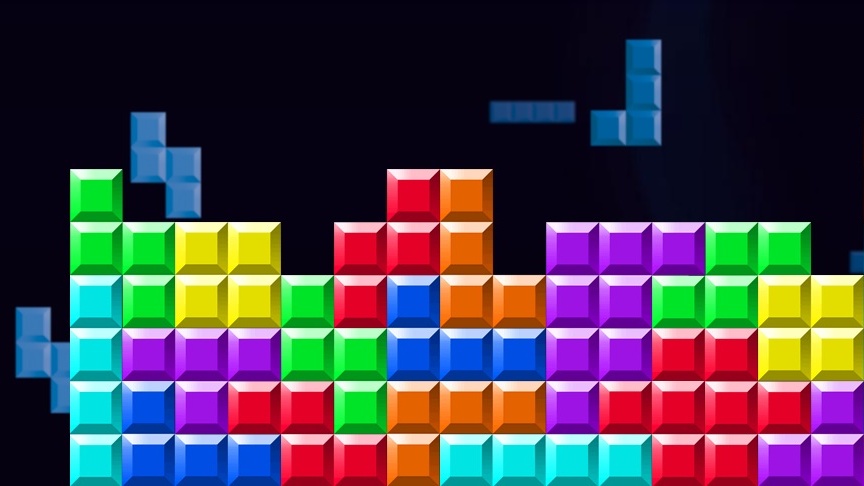Playing Tetris may have therapeutic benefits
Visually arresting

Anyone who has played Tetris knows that it’s an addictive experience; as basic as its gameplay is, it’s extremely compelling and there’s always a feeling that you can do better next time. It’s this aspect of the game in combination with its highly visual nature that has researchers looking into how it can be used as a treatment tool in therapy.
Professor Emily Holmes, an expert in psychology at the University of Karolinska, told the BBC she has spent years looking into the game’s possible medical applications. What she’s found is that the “absorbing” colors, shapes, and movements of Tetris really tap into visual memory in a way that pub quiz games and counting tasks don’t.
Holmes has just published a study which found that tapping into a patient’s visual memory is a good method of starting to treat the psychological impact of traumatic events and that Tetris is a good way to do this.
Visual memory
Holmes and a team at the University of Oxford gave Tetris to patients who had recently been admitted to hospital ER in a state of shock following road traffic accidents.
The researchers encouraged these patients to visualize the crash they had just experienced and then to begin playing Tetris on a Nintendo handheld.
They found that just twenty minutes of gameplay was enough of a distraction to stop the formation of disturbing memories related to the accident.
Holmes said that her team’s findings suggest that engaging in “very visually demanding tasks soon after a trauma” can “help block or disrupt the memory being stored in an overly vivid way.”
Get daily insight, inspiration and deals in your inbox
Sign up for breaking news, reviews, opinion, top tech deals, and more.
The patients in the study were far less likely to experience traumatic flashbacks to their accident than those who did not receive any intervention.
There is, however, only roughly a six-hour window of opportunity following the event in which an intervention of this manner is likely to be successful.
The study that Holmes and her team conducted was relatively small with only 71 volunteers but she now says she’s planning bigger studies to explore it further. If these larger studies prove to be just as beneficial, she believes it could be a treatment that hospitals could start to use.
We’re not sure how enthused we would be if, after a potentially traumatic accident, we found ourselves in an ER being presented with a Nintendo console but if it works, it works.
The evidence mounts
This isn’t the only kind of therapy Tetris has been found to be useful in, either.
Scientists from Plymouth University and Queensland University of Technology, Australia have previously found that it can help in curbing cravings for addictive substances like alcohol, cigarettes, and caffeine.
Their experiment was also relatively small, with only 31 students taking part. The students were asked to update the researchers throughout their day on their level of cravings for drugs, food and drink, exercise, and sex.
Half of the students were given an iPod on which they could play Tetris as a distraction and all of them reported decreased cravings. Like Professor Holmes, the researchers who conducted this study believed that the visually arresting and distracting nature of Tetris makes it the perfect distraction.
Researchers aren’t just using Tetris for mental therapy, there has also been success in using it to treat lazy eyes.
A few years ago a study found that an adapted version of Tetris was found that the game was useful in treating amblyopia (commonly known as lazy eye) as it’s able to train both eyes to work together.
This was a novel treatment approach – previously doctors had advised that patients cover their ‘good’ eye with a patch in order to make the affected eye work harder. The study involved 18 adults and asked half of them to play the modified version of Tetris using both eyes, while the other half played the regular version with their stronger eye covered.
It was found after two weeks that those who played the game with both eyes uncovered experienced much more significant improvements to their vision. The other half of the study who had only shown moderate improvement were then switched to the dual-eye method treatment and it was found that they also showed a marked improvement.
If anything, this collection of successful studies absolutely gives you a reasonable justification to hold onto those old games – you never know when they might come in handy.
- Feeling nostalgic? This is how to turn a Raspberry Pi into a retro games console
Emma Boyle is TechRadar’s ex-Gaming Editor, and is now a content developer and freelance journalist. She has written for magazines and websites including T3, Stuff and The Independent. Emma currently works as a Content Developer in Edinburgh.
